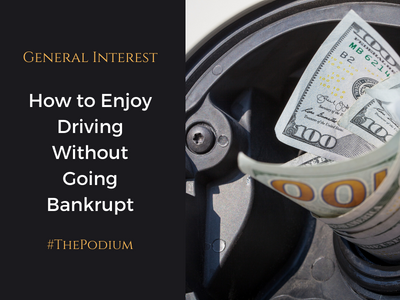
Most of us remember the price for a gallon of gas being much less than it is now. And while many of us can conserve our driving by taking public transit or carpooling, there’s no denying that the cost of fuel has become a major budget commitment for us all. If you’re looking for ways to get better gas mileage no matter what vehicle you drive, here are a few suggestions.
- Take the Junk Out of Your Trunk. The amount of weight you have in your vehicle directly affects the amount of gas required to drive from Point A to Point B. Remove unnecessary items from the trunk, cargo area or truck bed. It might also help to remove accessories like roof racks.
- Avoid Flooring It. Rapid acceleration wastes gas. So when you are coming off a stoplight, a stop sign, or entering the freeway, gently press the accelerator pedal to increase speed gradually and conserve fuel. When coming to a stop, avoid slamming on the brakes. Drive defensively and look ahead to upcoming signals or freeway traffic jams.
- Drive At A Consistent Speed. Driving at a steady speed reduces drag, which reduces fuel consumption. Using cruise control is an easy way to maintain a steady speed on the highway.
- Idling the Engine Wastes Gas. If you need to wait in line at the Drive-Thru, consider turning off your engine if you will be sitting for more than a minute. Modern engines do not need to be warmed up for more than a minute, even in Winter. Driving moderately until the temperature gauge shows the car has reached the right temperature will conserve fuel.
- Open Windows or Air Conditioning? Air conditioning does drain fuel efficiency when it is on, however, driving with the windows open makes your car less aerodynamic as the open windows cause drag. Consider leaving the windows down during slower city driving, and using the A/C when on the highway.
- Keep Tires Properly Inflated. Driving on tires that are low on air causes more friction between the tire and the roadway, making the vehicle less fuel efficient. Check your tire pressure regularly. Most drive-through oil change facilities will check your tire pressure as part of a safety check of your car. Also, be aware of the amount of tread on your tires. Driving on smooth tires is not only unsafe, but it can affect fuel efficiency.
- Maintain Your Vehicle On Its Recommended Schedule. Having your oil changed as recommended by the vehicle manufacturer, along with fluid checks, tune-ups and other routine maintenance helps a vehicle run smoothly and will conserve fuel. It also will allow you to drive that car a little bit longer.
- Price Shop For Gas. If you drive down a street or highway, you’ll notice that the price of a gallon of gas varies from company to company. The location of the station can also affect gas prices. For example, the price of gas at stations closer to a major highway tend to be a little higher than those in a suburb. Most gas stations offer a discounted price for gas – as much as ten cents a gallon in some cases – for paying in cash. Depending on how much you drive, it might be worth it to stop at the ATM on your way to the gas station.
Categorized in: General
| << previous | next >> |








